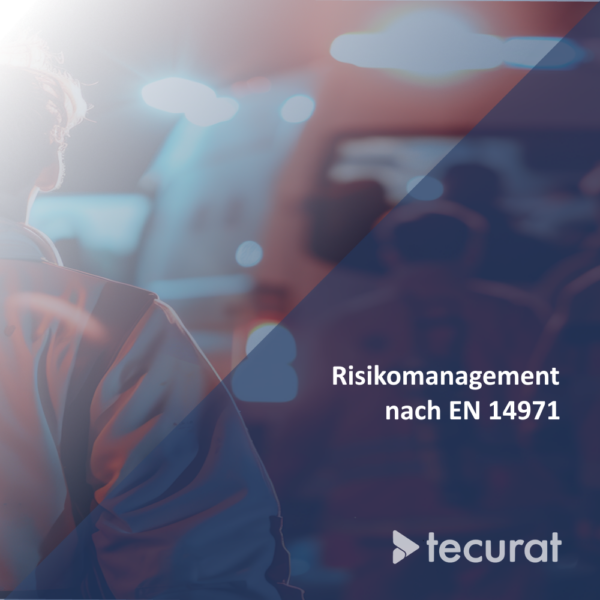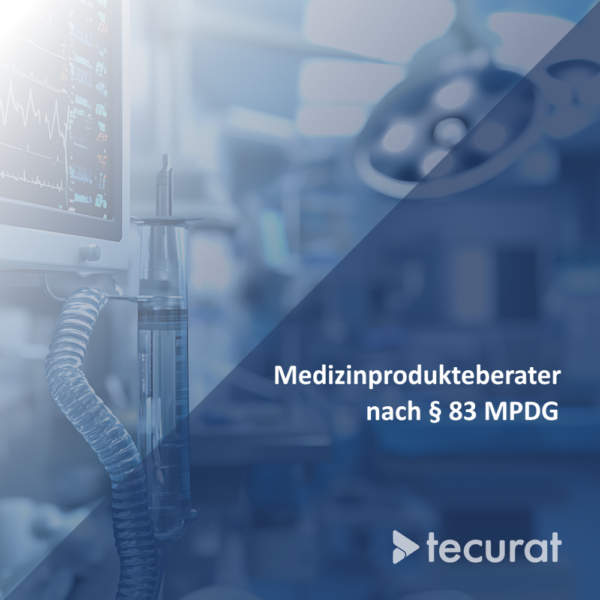Why regulatory resilience is becoming a critical success factor for success in medical technology
The medical technology industry is undergoing radical change. As the EU is grapples with the challenges of the Medical Device Regulation (MDR), massive layoffs at the FDA and the Department of Health and Human Services in the U.S. are shaking confidence in the stability of the American market. For companies in the industry, this means that those who want to survive in the long term must be resilient to regulation. This article highlights the current regulatory developments in the U.S. and the EU and shows how companies can deal with them strategically.
The situation in the US
Staff cuts at the FDA: A wake-up call for the industry
In spring 2025, the U.S. experienced an unprecedented reduction in healthcare regulations: the Department of Health and Human Services (HHS) plans to lay off an additional 10,000 employees, on top of the thousands who have voluntarily resigned or retired early since Trump took office in January – a significant portion of them from the Food and Drug Administration (FDA). The Office of Prescription Drug Promotion (OPDP) has been hit especially hard. This office consists of subdivisions that review drug advertising, as well as other divisions responsible for research, policy, and legal matters. While the review division was spared, all other employees were laid off.
In addition, experienced leaders such as Dr. Peter Marks, director of the Center for Biologics Evaluation and Research (CBER), left their posts. His expertise in the approval of vaccines and innovative therapies has been instrumental in many fast-track approvals in the past.
Consequences for medtech companies
For the medtech industry, this development in the U.S. means considerable uncertainty:
- Delayed approval processes: Fewer staff will lead to longer processing times for 510(k) submissions, premarket approvals (PMAs) and breakthrough device designations.
- Regulatory uncertainty: The closure of entire divisions means not only a shortage of staff, but also the loss of expertise and standards that have been established over many years.
- Shifting policy priorities: With these actions, the administration is signaling greater deregulation, which presents short-term opportunities but also significant long-term risks for product safety and investor confidence.
Companies with a strong focus on the U.S. market are therefore faced with the challenge of rethinking their regulatory strategies, preparing for longer procedures, or developing alternative markets.
The situation in the EU
MDR and IVDR: Between overload and opportunity
Since the introduction of the MDR (Medical Device Regulation) in May 2021 and the IVDR (In-vitro Diagnostic Medical Device Regulation) in May 2022, European medtech companies have had to contend with a significant increase in regulatory effort. The requirements for technical documentation, clinical evaluations, and post market surveillance processes have been tightened considerably.
Especially challenging:
- Bottlenecks at Notified Bodies: Many of the notified bodies were not MDR accredited in time or were overloaded, resulting in significant delays in certification.
- Cost explosion: The higher requirements are driving up the costs of certification massively, putting pressure on smaller companies in particular.
- Product availability at risk: Some manufacturers have decided to withdraw certain products from the market because MDR compliance no longer makes economic sense.
Extended transition periods – a necessary buffer
The EU Commission has responded to these difficulties with extended transition periods, most recently in 2023, in order to ensure market supply. This gives companies more time to adapt, but the pressure to comply remains.
Opportunities for strategically positioned companies
Despite all the challenges, the European regulatory system also offers stability:
- Predictability: The rules of the MDR are clearly defined – companies that adapt to them can benefit in the long run.
- Protection of innovation: The stricter requirements also aim to increase the quality and safety of products, which strengthens global confidence in European medical technology.
- Competitive advantage through resilience: Those who see regulatory change as a strategic opportunity can establish themselves as quality leaders in the European market and also score points internationally.
USA and EU in comparison – in a nutshell
Regulatory stability
While the EU has a clear, albeit challenging, set of rules, there is currently uncertainty in the US. The FDA has long been known as an innovation-friendly agency, but is now facing a massive loss of confidence.
Market access
Traditionally, the US market has been considered more accessible. Now, however, staff shortages and political influence threaten to lengthen the process. In the EU, procedures are more complex but more predictable – provided companies have the right processes in place.
Future prospects
The EU offers opportunities for companies willing to invest in regulatory strength. The US market remains important, but requires strategic restraint and close monitoring of developments.
In both markets, it is clear that the regulatory environment is more than just a compliance issue – it is increasingly becoming a strategic factor that determines market access, investment, and innovation capabilities.
Recommendations for companies
1. Systematically build regulatory resilience
- Companies should develop the ability to identify and proactively respond to regulatory changes. This includes regularly monitoring legislative initiatives and FDA/MDR updates, as well as maintaining an internal early warning system.
- Establish a regulatory intelligence team to track developments on a global level and prepare decision templates for senior management.
- Conduct regular risk analyses: Where are the bottlenecks with Notified Bodies? What products are most at risk? How robust are our approval processes?
2. Diversify target markets
- Companies should reduce their dependence on a single market, be it the EU or the US. New markets such as Asia (e.g., China, Japan, South Korea) or South America offer growth potential, but also require a deep understanding of regulations.
- Establish local partner networks that help to efficiently overcome cultural and regulatory hurdles.
- Develop modular product portfolios that can be flexibly adapted to different regulatory requirements.
3. Optimize and digitize quality management systems (QMS)
- A robust QMS is key to regulatory compliance. Companies should not only maintain existing systems (in compliance with ISO 13485), but also evolve them.
- Use digital tools for documentation, audits, and corrective and preventive action (CAPA) processes to increase transparency and efficiency.
- Train employees on new regulatory requirements, especially regarding MDR annexes, technical documentation, and vigilance systems.
- Implement regular mock audits to check internal compliance.
4. Proactive communication with regulators and Notified Bodies
- Early and open dialogue with the relevant authorities is crucial to minimizing uncertainty and speeding up processes.
- Use of pre-submission meetings with the FDA and similar formats in the EU to obtain feedback prior to formal submission.
- Establish long-term relationships with Notified Bodies, including ongoing updates on new developments and potential delays.
- Participation in industry committees and working groups to represent your own interests and obtain first-hand information.
5. Employee retention and development in the regulatory area
- In times of regulatory uncertainty, it is essential to retain experienced regulatory affairs and quality managers.
- Develop attractive training programs and career paths for RA and QMS professionals.
- Foster a regulatory corporate culture where compliance is not seen as a burden but as part of the innovation strategy.
6. Scenario planning for regulatory crises
- Companies should develop “what if” scenarios: What happens if the U.S. market temporarily collapses? How quickly can products be adapted to comply with MDR?
- Establish a regulatory crisis management plan so that immediate action can be taken in the event of an emergency (e.g., emergency response teams, communication strategies, supply chain adjustments).
7. Leverage technological innovation
- Companies should view regulatory requirements as an opportunity for innovation, not just an obstacle.
- Integration of RegTech (regulatory technology) solution, such as AI-powered tools for monitoring regulatory changes and automated document generation.
- Developing products with built-in compliance features, such as digital patient monitoring or automated data analysis to support clinical evaluation.
Conclusion
The medical device industry is at a crossroads with the regulatory complexity and rigor of the EU MDR on one side, and the growing uncertainty and instability of FDA-based processes in the US on the other. Both markets present specific challenges, but while Europe offers a clear, albeit demanding, regulatory framework, companies in the US are currently having to react vigilantly to political and structural changes.
Companies that embrace this reality and invest specifically in regulatory resilience have a clear advantage. Those that optimize their processes, strengthen their quality management and proactively communicate with the authorities will not only secure access to important markets, but can also use regulatory requirements as a driver for innovation.
Outlook – recognizing opportunities, shaping the future
Despite the uncertainties, there are enormous opportunities right now for medical technology companies that think strategically and act flexibly. Regulation should not be seen as an obstacle, but rather as a driver of sustainable growth and technological leadership.
The future belongs to companies that see change as an opportunity and use their regulatory strength to break new ground in medical technology.






